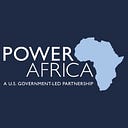Digital Energy Management and the Leaner, Cleaner Energy Systems of Africa’s Future
By David Riposo, Power Africa Energy Access Officer, and Dan Schnitzer, SparkMeter CEO
A new category of digital energy management solutions is emerging, purpose-built for African grid systems.
These lean, low-cost tools empower grid operators to improve reliability by identifying weak system components before they fail. They use grid analytics to forecast supply and demand dynamics on ever shorter time horizons that can inform dispatch and drive down the unit cost of energy.
Future energy distribution ecosystems incorporating these tools will empower energy managers to control costs, improve service delivery, and incorporate ever larger fractions of renewable power capacity.
Meet Power Africa Partner and Digital Energy Pioneer: SparkMeter
Based in Washington, DC, Power Africa partner SparkMeter provides grid management solutions to utilities throughout the developing world.
With more than 150,000 meters sold in 25 countries, the company is a go-to provider for micro-grid utilities to establish quick and economical payment collection and remote monitoring. Their solutions thrive in challenging operating environments marked by low bandwidth and intermittent power.
SparkMeter offers a comprehensive solution to smart metering that includes plug-and-play communications, and software applications for utility operations. In addition to its metering solution, SparkMeter is now offering software and services to support utility digital transformation. Via satellite imagery enhanced by drone surveys, SparkMeter builds a model of a distribution system, including each geotagged meter and key distribution system assets. The model enables a dashboard of dynamic insights on asset health and performance, reliability, safety, maintenance requirements, and financial performance.
This new offering is already generating success. With funding from the U.S. Trade and Development Agency, SparkMeter piloted a cashless payment solution and produced analytics on reliability, system losses, and operational metrics like voltage deviation and power factor for a utility in Nigeria.
In Zambia, a geospatial model of customer locations and power flow helped the utility make more informed decisions about a proposed grid expansion.
SparkMeter helped a micro-grid utility in Haiti identify areas suffering from poor performance and high rates of non-technical (commercial) loss.
Using SparkMeter technology, Stata Energy Limited plans to take advantage of a new sub-franchise authority in Nigeria, which will empower them to operate solar energy generation assets within the service territory of a distribution company that is struggling to maintain their aging equipment.
“As part of Stata’s innovative sub-franchise model, Stata will upgrade and refurbish a ring-fenced portion of the existing distribution infrastructure, much of which is dilapidated and overloaded,” said Salman Dantata, CEO of Stata. “SparkMeter’s solutions will provide us with an integrated digital distribution network,” added Dantata.
Imagining new models for energy delivery
Sustainable Development Goal 7 (SDG 7) calls for universal access to affordable, reliable, sustainable, and modern energy. Digital technologies can accelerate this desired outcome by decarbonizing legacy energy systems and helping expand access among the unelectrified.
A digitally enabled future for many African energy systems would represent a turn away from inflexible generators, dirty fuels, and congested transmission infrastructure and toward a new paradigm marked by flexible production, delivery, and consumption.
Virtual Power Plants (VPPs) are an example of a next generation technology and business strategy that might be enabled by digital tools. Consisting of a remotely managed network of generators and flexible power consumers, VPPs can provide as much power as a central generator at a lower cost and with greater flexibility. Best of all, this infrastructure can deploy quickly using a phased approach that provides benefits to consumers as the development lifecycle progresses toward completion.
VPPs are proliferating in the developed world where grid operators increasingly appreciate the spectrum of benefits that accrue to ratepayers and their bottom lines as a result of VPP deployment.
Grid operators in Africa would confront challenges if they followed a similar path, but those challenges are not insurmountable.
Power Africa has driven more than $22 billion into African energy markets and closed 133 generation deals since 2013. The widespread deployment of distributed energy resources aggregated into VPPs could drive billions more, but utilities will need digital technologies like SparkMeter’s to enable these applications.
African energy systems in too many instances are held back by mismatches between energy supply, demand and inadequate infrastructure for transmission and distribution.
Low rates of grid access and carbon-intensive portfolios poorly suited to future needs and demands compound those challenges. The long development horizons of new central power plants, the limited reach of the grid, and the tenuous financial position of many distribution utilities make clear that new strategies are required to implement SDG 7. Digital technologies and the business strategies they enable represent one such strategy. Power Africa and partners like SparkMeter are poised to implement it.
